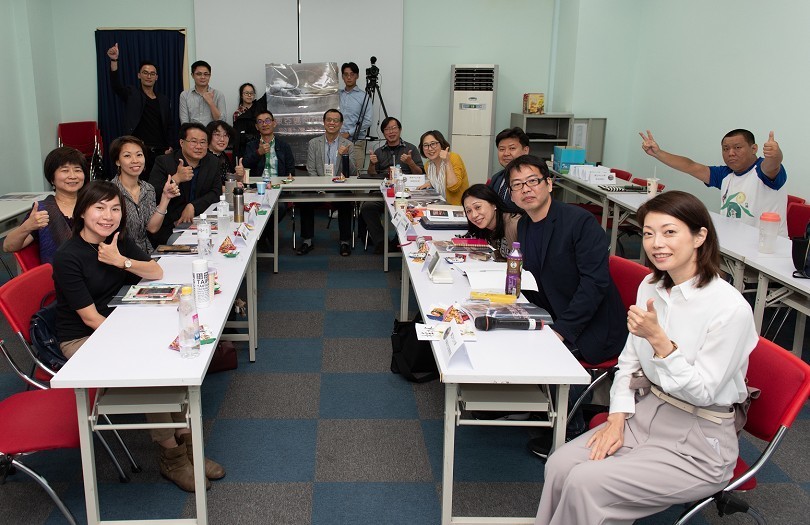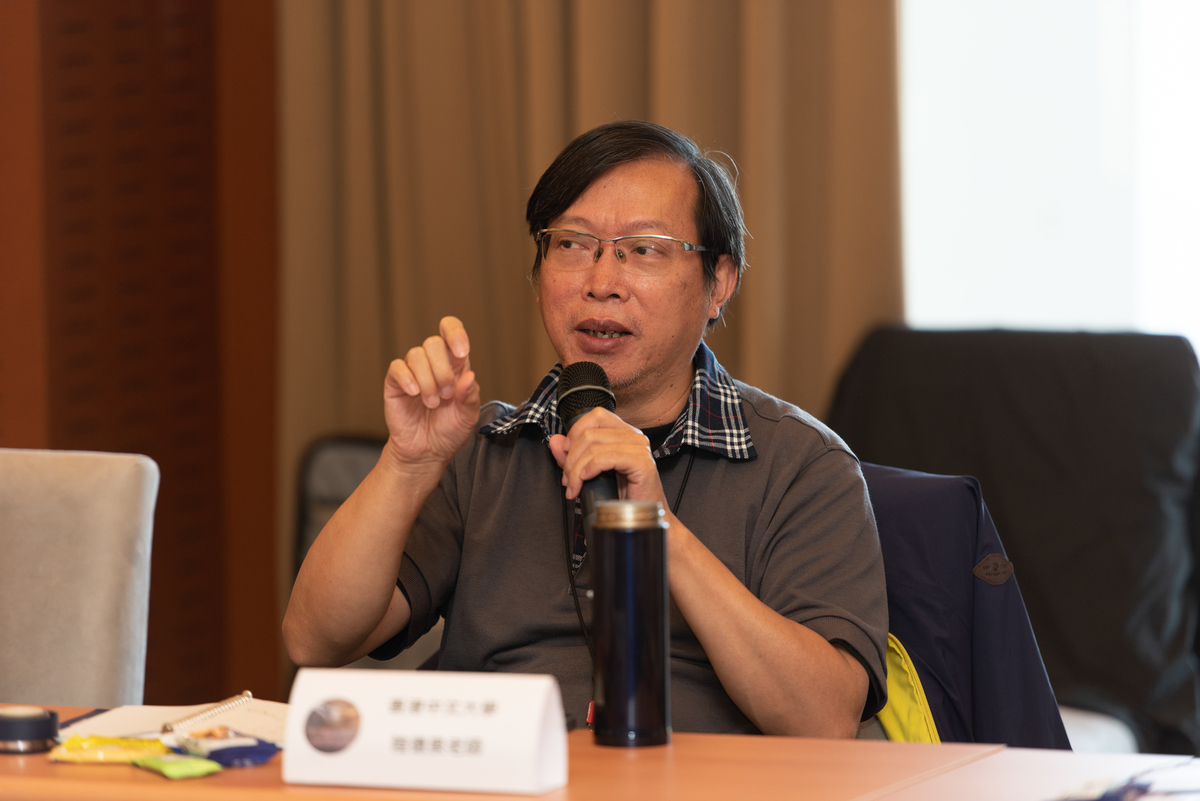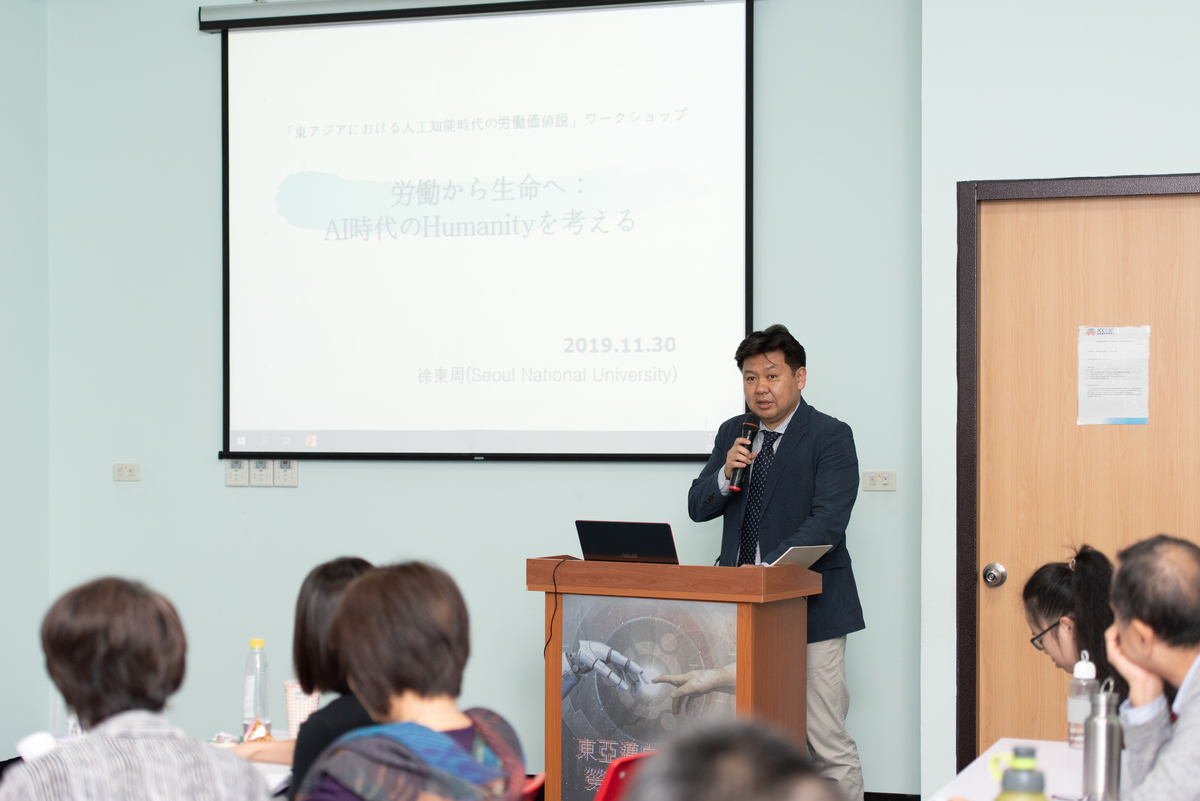Scholars from Taiwan, Japan, Korea and Hong Kong discuss the value of labor in the era of artificial intelligence



(Provided by Si-Wan College)
The appearance of artificial intelligence (AI) has revolutionized our world. How do we rethink and redefine ourselves in the new AI era? The project team of National Sun Yat-sen University carrying out the Humanity Innovation and Social Practice Program: Reconstruction of Memories and Innovation Transformation in the Transitional Community of Kaohsiung organized a two-day Forum on the Value of Labor in the AI Era in East Asia, that took place in International Convention Center Kaohsiung and NSYSU Sizih Building from November 30th to December 1st, 2019. Invited experts and scholars of different fields from Japan, Korea, Hong Kong and Taiwan concentrated on issues such as educational practice and international precedents and reflected on the value of labor.
Dean of NSYSU Si-Wan College Professor Stephen D.H. Tsai said that during two intensive days of the conference, the participants discussed different aspects of the human existence and the value of labor, proposing and analyzing different examples. Positioning ourselves in the era of artificial intelligence is an important task this Forum attempted to complete.
During the Forum, the participating scholars presented papers on a variety of topics ranging from labor-intensive industry to post-AI work society, exploring a broad range of aspects.
Professor Ming-Jen Yu of the Si-Wan College of NSYSU elaborated on the irreplaceable qualities of human beings and the application of AI in social innovation. Assistant Professor Kayo Ito gave the example of Mindar (a robot modeled after Kannon Bodhisattva and unveiled at Kodaiji Temple in Kyoto, Japan) to deliberate on the problem of self-exploration in the world influenced by AI and, together with Professor Seo Dong Ju from Seoul National University, she explored how to redefine ‘human’ in the AI era and how to adapt to a reality where humans and robots have to coexist. Professor Kai-Lin Liang from National Chi Nan University talked about the application and limitations of AI innovative solutions.
Is the advancement of AI technology really going to make robots replace the value of human beings? Professor Hsin-Ya Huang of the NSYSU Department of Foreign Languages and Literature gave the example of Ljavek Community in Kaohsiung City to stress the excellent aesthetics of the art of aboriginal artisans, emphasizing the uncopyable uniqueness of their skills. Doctoral student Kuo-Tung Lo of the NSYSU Department of Business Management shared the example of interdisciplinary cooperation on wooden boat. The team composed of Dr Chih-Yu Lee and Dr Meng-Chen Wu, working on Innovating, Entrepreneuring and Revitalizing in Kaohsiung Old Port and New Bay Communities – Cianjhen-Caoya Community Project, dug into practical wisdom in the life stories of the elderly living in that area. Professor Shi-Chi Yang of NSYSU Si-Wan College took artistic skills as the starting point to rethink the value of labor. The speakers ended up agreeing that at a certain point on the spectrum of technical and artistic skills the work of an artist/worker cannot be replaced by AI and enumerated people and professions that cannot be replaced by AI and discussed how to increase the value of labor.
The last panel of the forum focused on rethinking the value of labor from two aspects: industry development and worker’s self-acknowledgement. Professor Dequan Lu of The Chinese University of Hong Kong assessed the risk of post-work society breakdown and presented his observations on finding one’s place in the era of AI. He believes, that in the future, significant disparities will arise in the society and thus we should ponder on several issues – how to rebuild the connection between life and work and redefine the link between the individual and the society? Professor Yi-Shin Wu of the Si-Wan College, NSYSU, also presented the milestones of creating the play Kaohsiung Story and discussed the acknowledgement of the local culture by the young generation of the Cianjhen-Caoya community.
(Edited by Public Affairs Division)
The appearance of artificial intelligence (AI) has revolutionized our world. How do we rethink and redefine ourselves in the new AI era? The project team of National Sun Yat-sen University carrying out the Humanity Innovation and Social Practice Program: Reconstruction of Memories and Innovation Transformation in the Transitional Community of Kaohsiung organized a two-day Forum on the Value of Labor in the AI Era in East Asia, that took place in International Convention Center Kaohsiung and NSYSU Sizih Building from November 30th to December 1st, 2019. Invited experts and scholars of different fields from Japan, Korea, Hong Kong and Taiwan concentrated on issues such as educational practice and international precedents and reflected on the value of labor.
Dean of NSYSU Si-Wan College Professor Stephen D.H. Tsai said that during two intensive days of the conference, the participants discussed different aspects of the human existence and the value of labor, proposing and analyzing different examples. Positioning ourselves in the era of artificial intelligence is an important task this Forum attempted to complete.
During the Forum, the participating scholars presented papers on a variety of topics ranging from labor-intensive industry to post-AI work society, exploring a broad range of aspects.
Professor Ming-Jen Yu of the Si-Wan College of NSYSU elaborated on the irreplaceable qualities of human beings and the application of AI in social innovation. Assistant Professor Kayo Ito gave the example of Mindar (a robot modeled after Kannon Bodhisattva and unveiled at Kodaiji Temple in Kyoto, Japan) to deliberate on the problem of self-exploration in the world influenced by AI and, together with Professor Seo Dong Ju from Seoul National University, she explored how to redefine ‘human’ in the AI era and how to adapt to a reality where humans and robots have to coexist. Professor Kai-Lin Liang from National Chi Nan University talked about the application and limitations of AI innovative solutions.
Is the advancement of AI technology really going to make robots replace the value of human beings? Professor Hsin-Ya Huang of the NSYSU Department of Foreign Languages and Literature gave the example of Ljavek Community in Kaohsiung City to stress the excellent aesthetics of the art of aboriginal artisans, emphasizing the uncopyable uniqueness of their skills. Doctoral student Kuo-Tung Lo of the NSYSU Department of Business Management shared the example of interdisciplinary cooperation on wooden boat. The team composed of Dr Chih-Yu Lee and Dr Meng-Chen Wu, working on Innovating, Entrepreneuring and Revitalizing in Kaohsiung Old Port and New Bay Communities – Cianjhen-Caoya Community Project, dug into practical wisdom in the life stories of the elderly living in that area. Professor Shi-Chi Yang of NSYSU Si-Wan College took artistic skills as the starting point to rethink the value of labor. The speakers ended up agreeing that at a certain point on the spectrum of technical and artistic skills the work of an artist/worker cannot be replaced by AI and enumerated people and professions that cannot be replaced by AI and discussed how to increase the value of labor.
The last panel of the forum focused on rethinking the value of labor from two aspects: industry development and worker’s self-acknowledgement. Professor Dequan Lu of The Chinese University of Hong Kong assessed the risk of post-work society breakdown and presented his observations on finding one’s place in the era of AI. He believes, that in the future, significant disparities will arise in the society and thus we should ponder on several issues – how to rebuild the connection between life and work and redefine the link between the individual and the society? Professor Yi-Shin Wu of the Si-Wan College, NSYSU, also presented the milestones of creating the play Kaohsiung Story and discussed the acknowledgement of the local culture by the young generation of the Cianjhen-Caoya community.
(Edited by Public Affairs Division)
Click Num:
Share
